Now that we’ve looked at my recent tournament games, the only other new games to show you are my pathetic games against the computer. These sometimes have a morbid fascination to them.
Nevertheless, I do sometimes learn something interesting, or at least see something amusing. Last week I played a 211-move (!) game against Shredder that came down to an endgame that ought to be in a book somewhere. But first, let’s see how we got there…
Shredder was set at a rating of about 2100 for this game, not at full strength. We were playing at a time control of game in 10 moves, except that Shredder never claims a win on time, so we just kept on playing even after my flag fell and its flag fell.
Moves 1-28: Obtain a Winning Position.
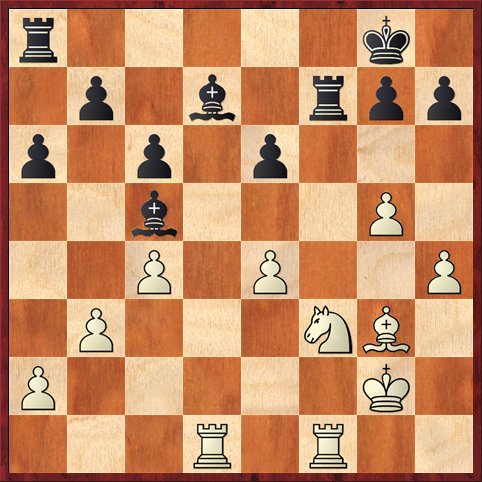 FEN: r5k1/1p1b1rpp/p1p1p3/2b3P1/2P1P2P/1P3NB1/P5K1/3R1R2 w – – 0 29
FEN: r5k1/1p1b1rpp/p1p1p3/2b3P1/2P1P2P/1P3NB1/P5K1/3R1R2 w – – 0 29
Position after 28. … Rf7. White to move.
White stands much better here, and after 29. Rd3 R8f8 30. R1d1 Bc8 31. Ne5 Re7 Black is barely holding on. I can perhaps play 32. Be1 with the idea of bringing the bishop around to d8. Black can hardly do anything. For example, if 32. … Rf4 33. Rd8+ Rf8 34. Rxf8+ Kxf8 35. Rd8+ Re8 36. Rxc8! wins.
However, as I said this was speed chess, and I got the move order wrong. I played 29. Ne5? Rxf1 30. Rxf1 Be8 31. Rd1 Be7. Black’s bishops now defend all of the entry squares, and Black plans to play …. Rd8 and trade off the other pair of rooks. White’s advantage is nearly gone.
Moves 32-52. Continue Blundering. Build a Fortress and Start Counting.
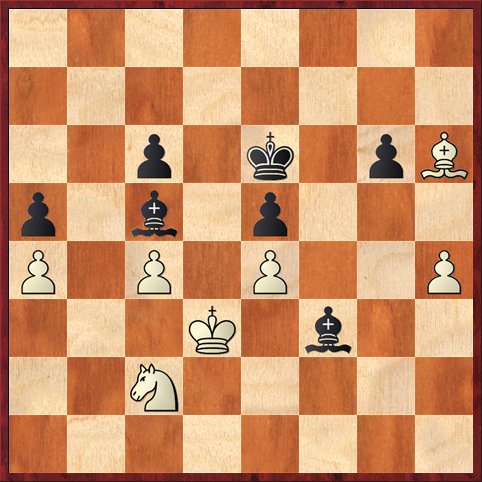 FEN: 8/8/2p1k1pB/p1b1p3/P1P1P2P/3K1b2/2N5/8 b – – 0 52
FEN: 8/8/2p1k1pB/p1b1p3/P1P1P2P/3K1b2/2N5/8 b – – 0 52
Position after 52. a4. Black to move.
After a few more blunders I found myself in a completely defensive position. But there is still hope! Black’s dark-squared bishop is a sorry piece. His light-squared bishop is a real menace, but my king and knight keep my pawns defended for now. Most importantly, there is not a single pawn break possible, except for … g6-g5. The computer could try to bring its king around to the h-file to win my h-pawn, but if I’m even moderately alert it should never succeed.
My last move was 52. a4, a pawn move. That starts the 50-move countdown. If he doesn’t play … g6-g5 by move 102, it’ll be a draw.
Moves 52-119: Pure Boredom
FEN: 8/8/1bp1k3/p3p3/P1P1P3/3K4/2N5/3bB3 w – – 0 1
Position after 119. Be1. Black to play.
For 48 moves, Shredder just shuffles its pieces and I shuffle mine. Finally on move 100, under the threat of the 50-move rule, it pushed its pawn to g5 and I traded, thus resetting the 50-move clock.
In some ways the computer acts like an unbelievable gentleman and in other ways like a complete jerk. Gentleman: It doesn’t call my flag, even fifteen minutes after I have “run out of time.” Jerk: It insists on playing out the position to the 50-move rule, even when it doesn’t have a semblance of a plan. Then it moves a pawn, and here we go again. Of course, it’s neither a gentleman nor a jerk. It’s just a program.
This time I didn’t have to wait 50 moves for the next pawn move. It surprised me by playing 119. … c5. After this awful-looking move his dark-squared bishop has no future, or so it seemed. I thought that the game would be over soon.
Moves 119-130: Meltdown
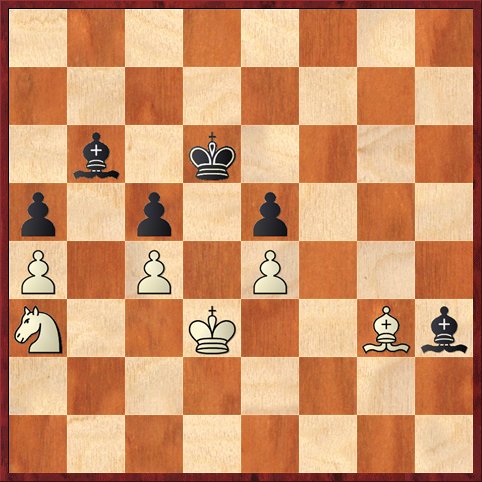 FEN: 8/8/1b1k4/p1p1p3/P1P1P3/N2K2Bb/8/8 w – – 0 128
FEN: 8/8/1b1k4/p1p1p3/P1P1P3/N2K2Bb/8/8 w – – 0 128
Position after 127. … Bh3. White to move.
Strange things start happening to your brain after 127 moves. For most of my last 70 moves I’ve just been moving as quickly as possible because there has been nothing to think about. So I didn’t really think that hard about the consequences of the computer’s 119. … c5. Well, of course I saw that my knight had great new squares on b5 and d5. But then when I got to this position I got cold feet. After 128. Nb5 it suddenly occurred to me that the knight would no longer be able to defend my pawns as effectively as it had at c2. It’s silly in retrospect, but that’s why I decided to play 128. Nc2, the knight returning to its nice familiar square. And then I was shocked when the computer played 128. … Bd7, and I realized I couldn’t defend the a-pawn!
Nevertheless, I could have easily won a pawn back with 129. Ne3 Bxa4 130. Ng4. But I was so shocked by losing the a-pawn that I took leave of my senses, and played 129. Ne3 Bxa4 130. Bh4?
I guess the reason I did this was that I wanted to bail out into an opposite color bishops endgame if possible, and I thought that this move would imprison his dark-squared bishop and I might be able to trade it off. But it doesn’t, and I can’t.
So now after 130. … Bb3 131. Nd5 Ba7 I’ve gone from the most drawn position in history to being a pawn down and really having to work for the draw.
Moves 132-156: SCB, not OCB!
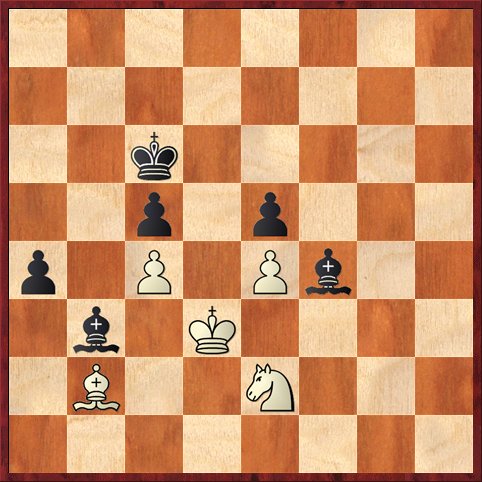 FEN: 8/8/2k5/2p1p3/p1P1Pb2/1b1K4/1B2N3/8 w – – 0 153
FEN: 8/8/2k5/2p1p3/p1P1Pb2/1b1K4/1B2N3/8 w – – 0 153
Position after 153. … Bf4. White to move.
After a few more moves of maneuvering, I finally get my chance to go into an opposite-color bishop endgame! But again I got cold feet. If I take his bishop with 154. Nxf4 ef, he now has widely separated passed pawns (four files apart), which is far enough apart to be a real danger in an opposite-color bishop endgame. Of course I have a passed e-pawn, but I wasn’t sure if that made any real difference. Instead I decided to just hold the line with 154. Nc1 Bd1 155. Ne2. How is Black going to make progress?
The answer is that he trades into a same-color bishop endgame. He played 155. … Bxe2+ 156. Kxe2. If you’re still with me, now is when things get really interesting!
Moves 156-193: Dodging Bullets
There was nothing I could do prevent him from getting his pawn to a2. But in the next diagram, I saw that there was only one thing that I had to avoid like the plague. I can’t ever allow him to get his bishop to d4, or the game would be over. As long as I can keep his bishop away from g1, f2, or e3, he can’t get to d4.
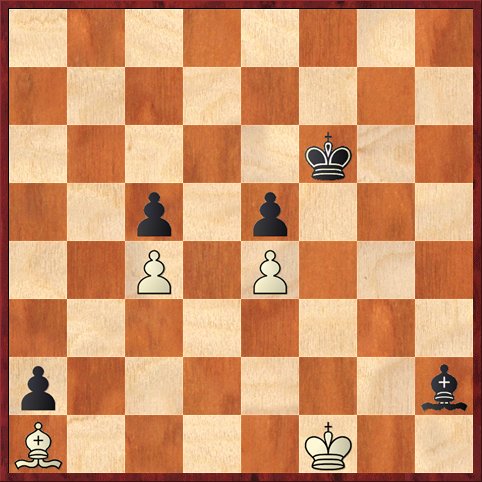 FEN: 8/8/5k2/2p1p3/2P1P3/8/p6b/B4K2 b – – 0 172
FEN: 8/8/5k2/2p1p3/2P1P3/8/p6b/B4K2 b – – 0 172
Position after 172. Kf1. Black to move.
But there’s another problem, which I did not have time to work out over the board. What if he sacrifices the bishop in order to penetrate with his king? It turns out that White still draws — by a miracle. The critical line is 172. … Kg5 173. Kg2 Kf4! 174. Kxh2 Kxe4 175. Kg3. The first miracle is that Black has to part with the e5 pawn to make any progress. So 175. … Kd3 176. Bxe5 Kxc4 is forced. But White still has to be ultra-careful. The only way to draw is 177. Kf2! Kd3 178. Ke1! (diagram)
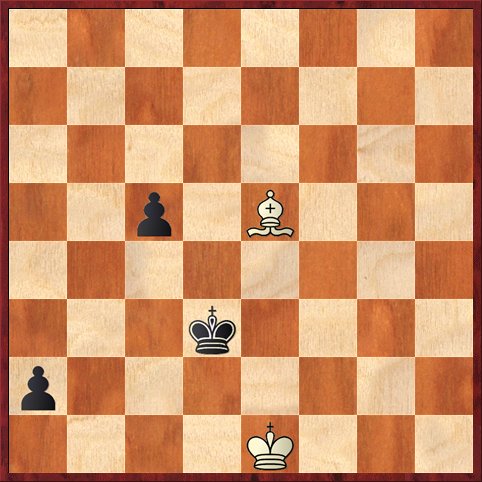 FEN: 8/8/8/2p1B3/8/3k4/p7/4K3 b – – 0 178
FEN: 8/8/8/2p1B3/8/3k4/p7/4K3 b – – 0 178
Position after 178. Ke1 (analysis). Black to move.
Black has two tries: 178. … Kc2 or 178. … c4. What would you do after these moves?
The answer is the same in each case: 179. Ba1!
If 178. … Kc2 179. Ba1 Kb1 180. Kd1. My king is just like a jailer following the prisoner into jail! After 180. … Kxa1 181. Kc1, even though Black is two pawns up, he can never extricate his king from a1. What a cool draw!
Alternatively, if 178. … c4 179. Ba1 Kc2 180. Ke2 c3 181. Ke1 Black can’t make progress. If 181. … Kb1 182. Bxc3, and if 181. … Kb3 182. Kd1.
Whew! I don’t know what Shredder’s “thought process” was. Did it even consider the bishop sacrifice? Did it analyze it all the way to a draw? In any case, it probably should have played this way, because it’s unlikely that I would have found 179. Ba1 in a blitz game.
Back in the position on move 172, another possible plan for Black is to put the bishop on f4 and bring his king to h3, which I cannot stop. However, he can’t get any farther. If he plays … Kh2 I play Kf2. If he puts the bishop on g3, I just keep my king on f3 and play waiting moves with my bishop.
Instead of either of these critical lines, the computer just played more boring, pointless maneuvering with 172. … Ke6. But I did have to dodge one more bullet!
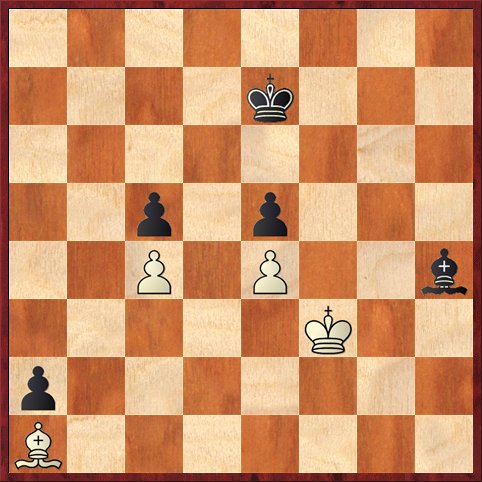 FEN: 8/4k3/8/2p1p3/2P1P2b/5K2/p7/B7 w – – 0 193
FEN: 8/4k3/8/2p1p3/2P1P2b/5K2/p7/B7 w – – 0 193
Position after 192. … Ke7. White to move.
The machine has cleverly set up a trap: 193. Bxe5?? Bf6!
However, for once I kept my wits about me and just played 193. Bb2. After that the machine couldn’t think of any other tricks, and finally after move 211 we drew by the 50-move rule.
See? Easy as pie. Now you can go off and play your own 211-move draws. Now if you’ll excuse me, I’m late for a staring contest with a basilisk…
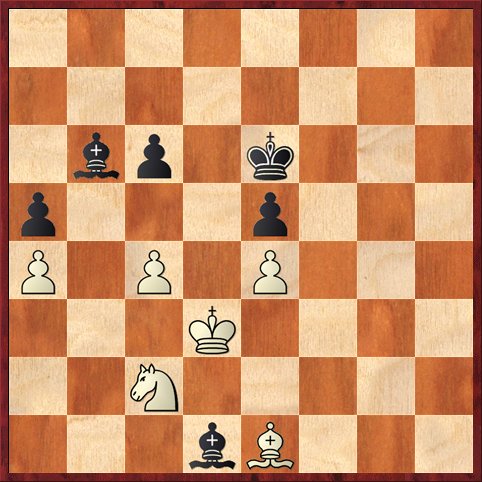



{ 1 comment… read it below or add one }
Testing, testing, one, two, three…